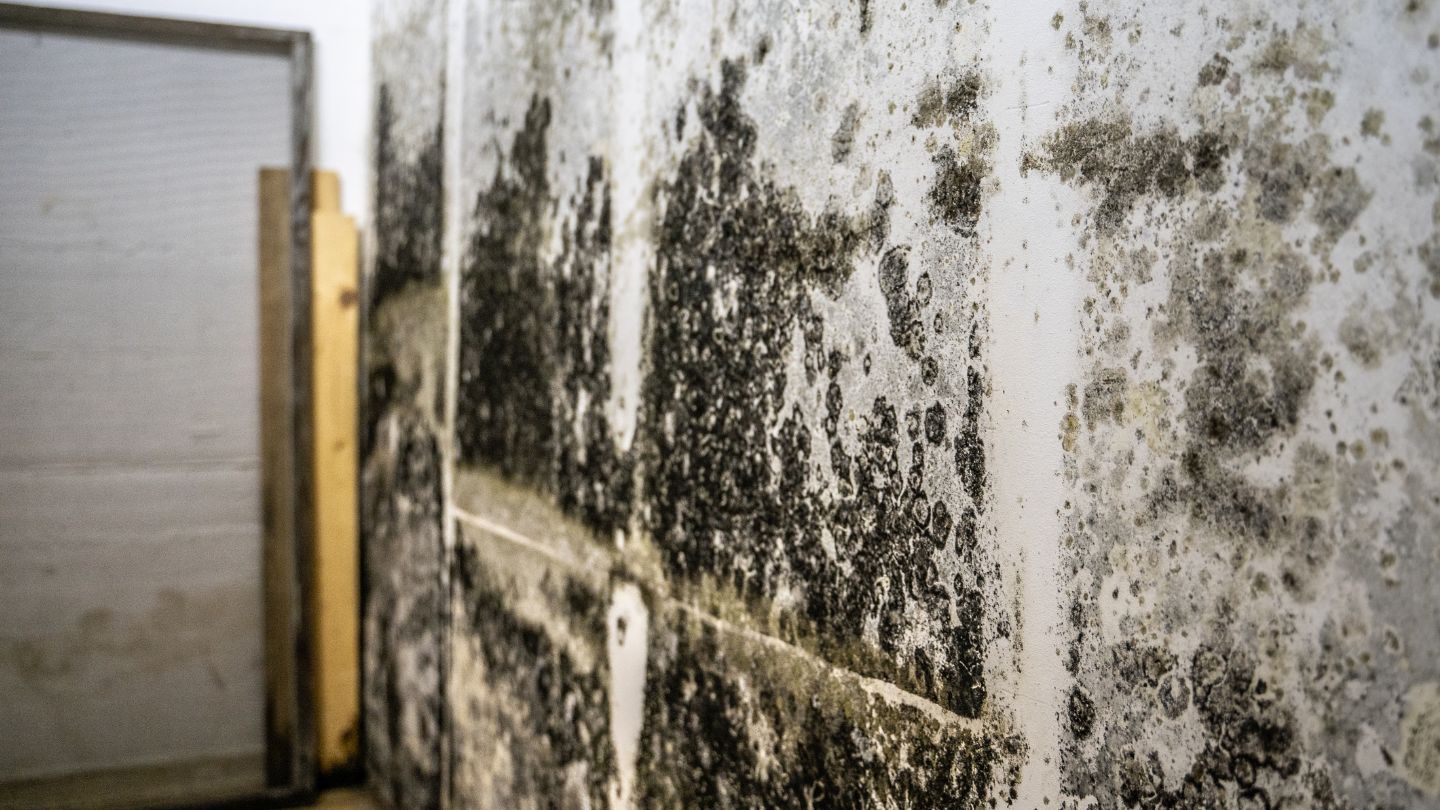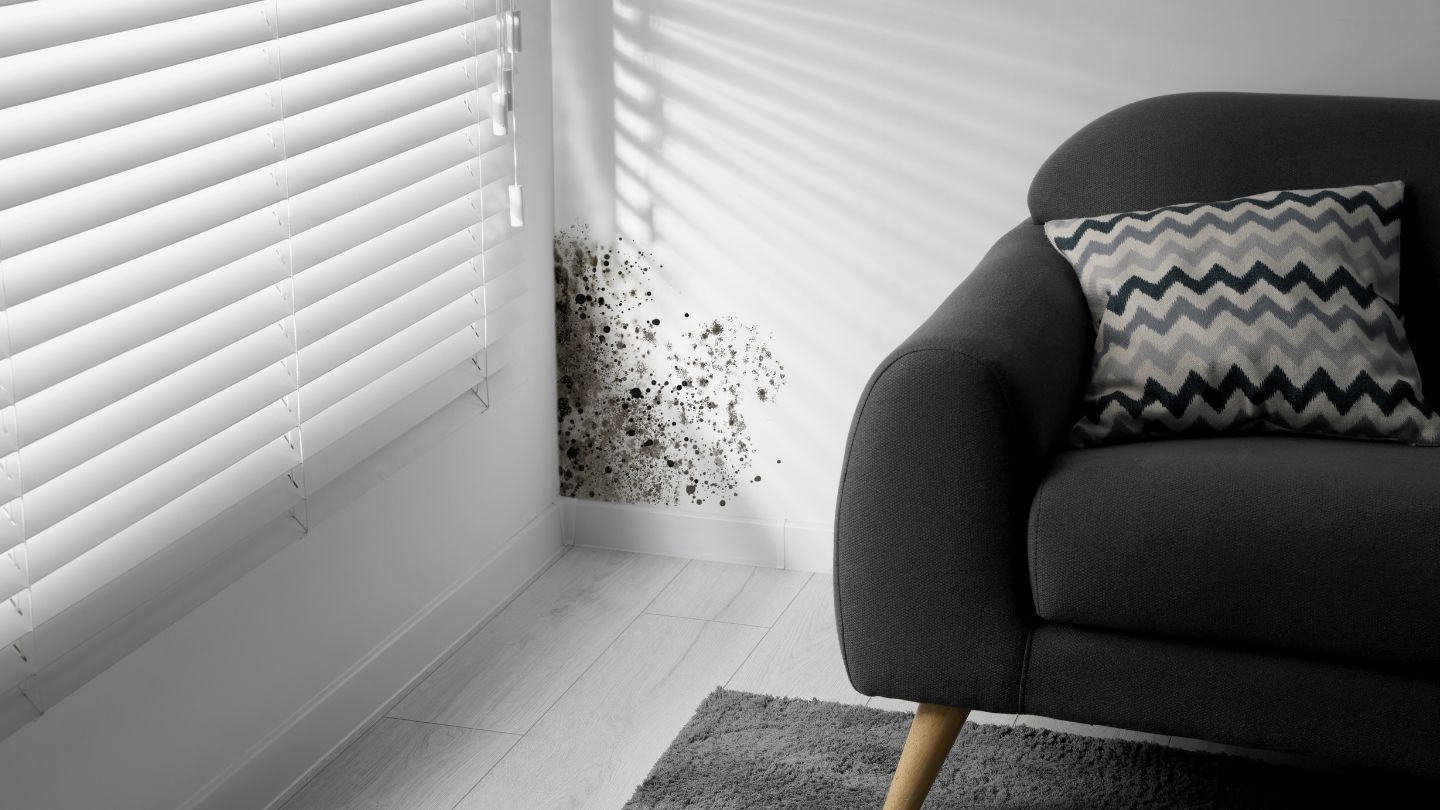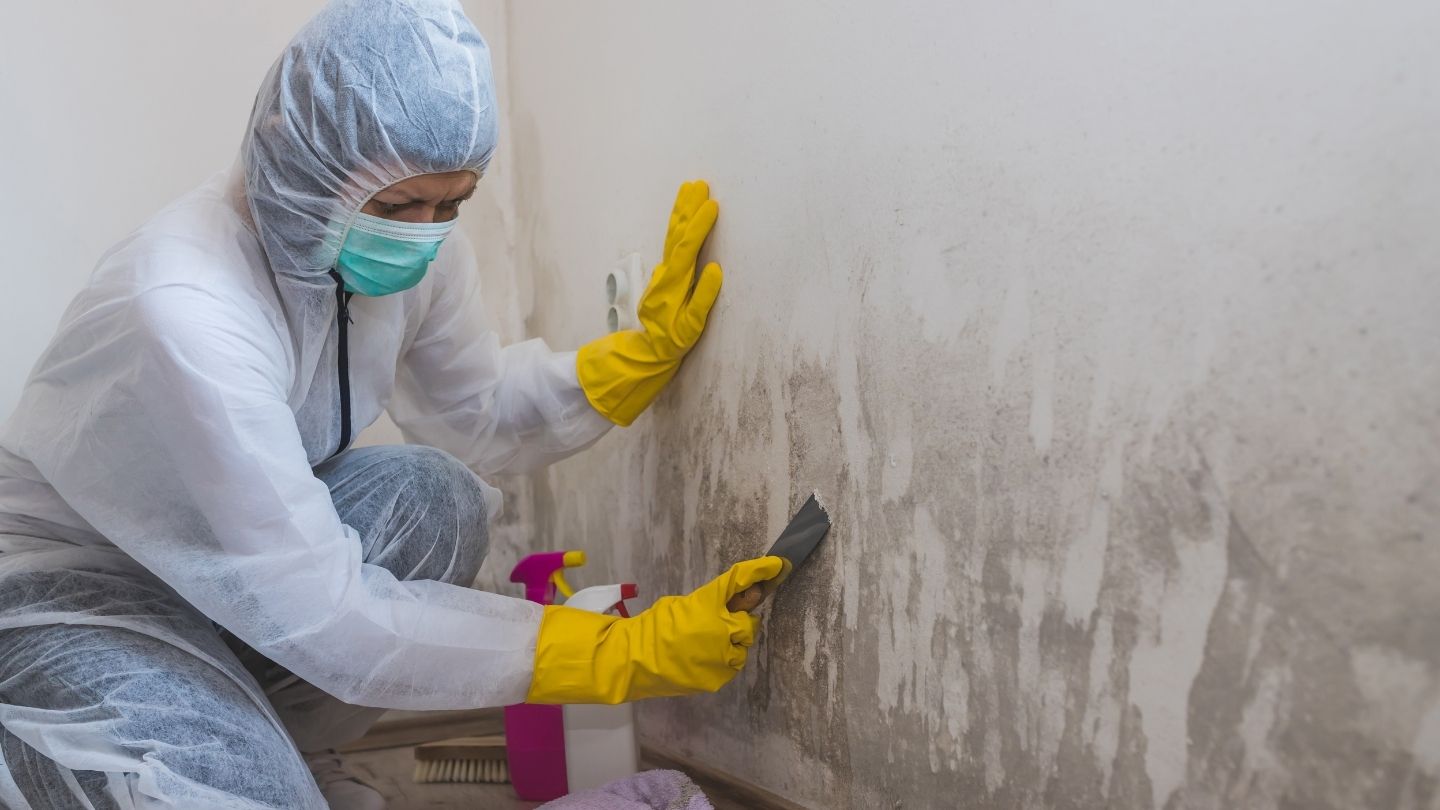Toxic mold exposure can cause respiratory problems, skin irritation, and cognitive issues. Mold spores enter your respiratory system, causing coughing, wheezing, and breathing difficulties. Those with chronic conditions, allergies, or weakened immune systems are more vulnerable. This blog addresses the effects of long-term mold exposure and provides solutions to protect your health.
Key Takeaways
- Prolonged exposure to mold can lead to significant health issues, including respiratory problems, skin irritation, and cognitive effects, especially in vulnerable populations.
- Effective mold management requires immediate remediation strategies, including removal, moisture control, and proper ventilation to prevent future growth.
- Mold testing and professional inspection are crucial for identifying and addressing mold issues, ensuring indoor air quality is maintained and health risks are minimized.
What is Mold Exposure?

Mold exposure refers to the inhalation or direct contact with mold spores, which can lead to a range of health problems. Mold thrives in moisture-rich environments, from homes to workplaces, and can proliferate rapidly if not addressed.
Definition of Mold Exposure and Its Causes
Mold exposure is defined as the inhalation or contact with mold spores, which can lead to various health issues. The primary causes of mold exposure include:
- High Humidity: Environments with high humidity levels provide the perfect breeding ground for mold.
- Water Damage: Leaks, flooding, and other forms of water damage can lead to mold growth if not addressed promptly.
- Poor Ventilation: Inadequate airflow can trap moisture, encouraging mold proliferation.
- Flooding: Standing water from floods can seep into building materials, fostering mold growth.
- Leaks in Pipes or Roofs: Persistent leaks create damp conditions that are ideal for mold.
- High Temperatures: Warm environments can accelerate mold growth, especially when combined with moisture.
By addressing these causes, you can significantly reduce the risk of mold exposure and its associated health problems.
Types of Mold: Allergenic, Pathogenic, and Toxigenic
Mold can be classified into three main types based on the health risks they pose:
- Allergenic Mold: This type of mold produces allergens that can trigger allergic reactions, such as respiratory issues and skin irritation. Common allergenic molds include Cladosporium and Alternaria.
- Pathogenic Mold: Pathogenic molds can cause infections, particularly in individuals with compromised immune systems. Examples include Aspergillus and Fusarium, which can lead to serious health complications.
- Toxigenic Mold: Toxigenic molds produce mycotoxins, which can cause severe reactions, including respiratory problems, neurological issues, and even death. Stachybotrys chartarum, commonly known as black mold, is a well-known toxigenic mold.
Recognizing the different types of mold and their potential health impacts is essential for effective mold remediation and prevention.
Health Risks of Prolonged Mold Exposure

Symptoms frequently reported from such exposure include memory loss, headaches, and mood fluctuations. Toxic mold exposure over an extended period can severely impact one’s health if it isn’t dealt with swiftly. By dispersing spores and emitting volatile organic compounds into the environment, mold greatly compromises the quality of indoor air, potentially causing a range of health problems. Those most at risk from these hazards include seniors, children, people suffering from asthma, or those with compromised immune systems.
In subsequent sections, we will explore particular health concerns linked to exposure to mold. These concerns encompass respiratory complications and skin irritation, as well as potential effects on cognitive function.
Respiratory Issues
Mold symptoms from inhaling spores may lead to various respiratory problems, including nasal stuffiness, breathing difficulties, and the exacerbation of asthma symptoms. These mold spores have the potential to provoke asthma attacks and can cause lung infections even in people with no prior health issues. The presence of coughing, wheezing, and trouble breathing signals that exposure to mold is impacting respiratory health, underscoring the importance of sustaining high-quality indoor air.
Skin Irritation and Allergies
Exposure to mold often results in skin allergies and irritation, with prolonged contact potentially leading to allergic symptoms, including rashes and itching. Those with a compromised immune system, such as individuals with uncontrolled HIV or undergoing cancer treatment, are especially prone to experiencing these severe reactions, underscoring the importance of adopting strategies for managing and preventing mold allergies effectively.
Cognitive and Mental Health Effects
Exposure to mold for extended periods has been associated with cognitive and mental health impacts, often referred to as toxic mold syndrome. Symptoms frequently reported from such exposure include memory loss, headaches, and mood fluctuations. Although the direct connection between severe mental health problems such as memory loss and mold exposure isn’t definitively established, there exists a significant correlation that calls for immediate attention and corrective action.
Vulnerable Populations and Mold Exposure
Certain populations are more vulnerable to the effects of mold exposure, making it crucial to take extra precautions to protect their health. Understanding the specific risks for these groups can help implement effective prevention strategies.
Risks for Children, Elderly, and People with Compromised Immune Systems
Children, the elderly, and individuals with compromised immune systems are particularly susceptible to the effects of mold exposure. This increased vulnerability is due to their weaker immune systems, which make it harder for them to fight off infections and other health issues caused by mold.
- Children: Mold exposure can lead to respiratory problems, skin irritation, and allergic reactions in children. Their developing immune systems are less equipped to handle the adverse effects of mold.
- Elderly: For elderly individuals, mold exposure can exacerbate existing health conditions, such as asthma and chronic obstructive pulmonary disease (COPD). Their age-related decline in immune function makes them more prone to mold-related health issues.
- People with Compromised Immune Systems: Individuals with weakened immune systems, such as those undergoing chemotherapy or living with chronic illnesses, are at a higher risk of severe reactions to mold exposure. This can include infections and even organ damage.
Common Sources and Types of Mold in Homes

Mold often thrives in hidden, moisture-prone areas of the home. Common sources include ceiling tiles, walls, carpeting, and cellulose products like paper and wood. Mold can hide behind paint, under carpets, in air conditioning systems, and behind sheetrock, making it difficult to detect without a thorough inspection.
The following subsections will explore moisture-prone areas and types of harmful mold in more detail.
Moisture-Prone Areas
The primary cause of mold proliferation in residential spaces is the presence of moisture. Areas such as bathrooms, kitchens, and crawlspaces are especially vulnerable to becoming breeding grounds for mold because they typically retain a degree of wetness. Bathrooms that lack adequate airflow are significantly susceptible to this issue, just like kitchen zones near sinks and refrigerators where remnants of food mix with humidity.
To stave off the development of mold, it is important to conduct frequent examinations and ensure good air circulation within these critical areas.
Types of Harmful Mold
Mold can be classified into three primary groups according to their potential health hazards.
- Allergenic molds are known to cause minor allergic reactions.
- Pathogenic molds present considerable dangers to individuals with compromised immune systems.
- Toxigenic mold generates toxins that may result in serious health complications, and It requires prompt eradication by expert handlers.
Recognizing the distinctions between these mold categories is vital for successful abatement efforts.
Read more: 7 Types of Mold You Might Encounter in Your House
Impact of Mold on Indoor Air Quality
Mold plays a substantial role in deteriorating indoor air quality, which can prompt various health problems. This fungus flourishes in moist areas and has the potential to greatly degrade the quality of air inside buildings. Ensuring that indoor air remains clean is crucial for preventing mold’s detrimental impact and promoting general health.
Subsequent sections will delve into the contribution of microbial volatile organic compounds (MVOCs) to this issue and provide guidance on how to enhance indoor air quality.
Microbial Volatile Organic Compounds (MVOCs)
Mold generates airborne substances known as microbial volatile organic compounds (MVOCs), which are responsible for unpleasant smells and health problems. These emissions from mold can lead to strong odors, with associated adverse effects such as respiratory irritation and headaches. Limited research suggests that breathing in MVOCs may result in symptoms including nausea, dizziness, and fatigue.
The impact of MVOCs on an individual’s respiratory health and general wellness is considerable. It is essential to address mold concerns without delay.
Improving Indoor Air Quality
Improving indoor air quality is essential for a healthier living environment, particularly in spaces prone to mold growth. Air purifiers can help reduce mold spores and improve indoor air quality. Dehumidifiers effectively reduce moisture levels, thereby minimizing mold growth and enhancing air quality.
Combining air purifiers and dehumidifiers can significantly enhance indoor air quality and reduce mold-related health risks.
Professional Mold Inspection and Remediation
If you suspect mold in your home, contacting a professional mold remediation company like Mold-B-Gone is essential. Our licensed inspectors thoroughly assess hidden areas for mold presence and offer tailored remediation solutions.
Mold-B-Gone: Your Trusted Partner for a Mold-Free Home
Mold removal is crucial for keeping health problems at bay. Partnering with a reliable mold removal company can make all the difference. Mold-B-Gone stands out as a premier choice for mold removal in Atlanta. With an unwavering commitment to excellence and safety, our expert team ensures your home is free from the health hazards of mold. Don’t let mold compromise your living space any longer. Contact us today to schedule a consultation and take the first step towards a cleaner, healthier home environment. Trust us to tackle your mold issues with professionalism and care. Long-term mold exposure can have serious impacts on both your health and property, making early detection and professional intervention crucial. At Mold B Gone, we offer comprehensive solutions including duct cleaning, eviction clean outs, IAQ testing, mold remediation, water damage flood restoration, whole house and room sanitizing, and many other specialized services to ensure your environment is safe, healthy, and mold-free. Contact our experts today to protect your health and preserve your property’s value. We also offer services in Marietta, Smyrna, Suwanee, Woodstock, and other locations, ensuring comprehensive support no matter where you are.
Frequently Asked Questions
What health problems can mold cause?
Mold exposure can significantly affect your health, potentially causing skin irritation, sinus infections, upper respiratory illnesses, fatigue, headaches, and mood swings.
It’s crucial to address mold issues promptly to protect your well-being.
What should be done if there is visible or suspected mold growth in a home?
If you notice visible or suspected mold growth in your home, it is essential to hire a professional to conduct a thorough inspection and recommend necessary remediation services.
This ensures the safe and effective removal of mold.
Are there any long-term effects of mold exposure?
Yes, prolonged exposure to mold may lead to chronic respiratory conditions, skin sensitivities, and even cognitive effects. It’s essential to address mold promptly to avoid these long-term health impacts.

